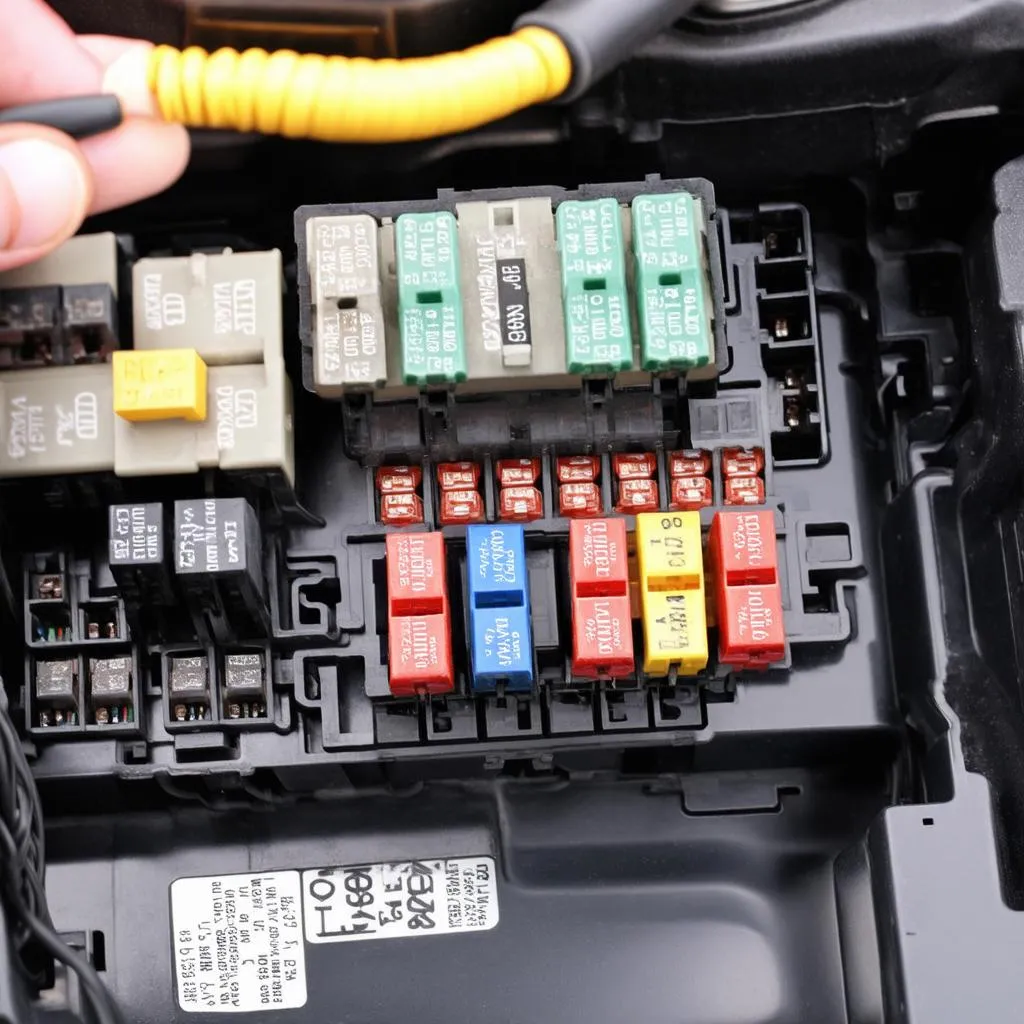Ever popped the hood of your 2006 Honda CRV, plugged in your trusty OBD2 scanner, and been met with…nothing? Or maybe you saw some flickering lights and a jumble of error codes that left you scratching your head? Trust me, you’re not alone. The struggle is real, especially when it comes to understanding the quirks of our beloved CRVs.
Let’s dive into the world of OBD voltage, decode those cryptic messages, and get your CRV back in tip-top shape.
Understanding the OBD Port and Why Voltage Matters
Imagine your car’s OBD port as a direct line of communication to its electronic brain. It’s how mechanics, and tech-savvy owners like yourself, can tap into the vehicle’s computer system, diagnose issues, and even clear pesky warning lights.
But here’s the catch: that communication relies on a stable voltage supply. Think of it like the electricity that powers your phone. Without the right juice, the connection is weak, the messages get garbled, and you’re left with a frustrating silence.
What Should the Voltage Be?
Ideally, you want to see around 12 volts at your CRV’s OBD port with the engine off. This indicates a healthy electrical system ready to chat.
Common Reasons for Low or Fluctuating Voltage
- Dead or Dying Battery: Just like our phones need a charge, a weak battery can cause all sorts of electrical gremlins, including a low OBD voltage reading.
- Loose or Corroded Connections: Over time, battery terminals and wiring harnesses can become loose or corroded, disrupting the flow of electricity.
- Faulty Alternator: This crucial component keeps your battery charged while driving. A failing alternator can lead to a drop in voltage, wreaking havoc on your CRV’s electronics.
- Parasitic Drain: Sometimes, a sneaky electrical component can draw power even when the car is off, slowly draining your battery and impacting OBD voltage.
Troubleshooting Time: Getting to the Root of the Problem
- Check the Obvious: Begin with a visual inspection of your battery terminals. Look for any signs of corrosion (that white, powdery stuff) or loose connections.
- Test Your Battery: A simple voltmeter can tell you if your battery is holding a charge.
- Inspect the Fuses: Your CRV has a fuse box that protects various electrical circuits. A blown fuse related to the OBD port could be the culprit. Refer to your owner’s manual for the location and diagram of your fuse box.
 Fuse Box
Fuse Box
- Consider a Parasitic Draw Test: If you suspect something’s draining your battery when the car is off, a mechanic can perform a parasitic draw test to pinpoint the offender.
Beyond the Technical: The Energy of Your CRV
In many spiritual traditions, cars are seen as more than just machines. They represent freedom, motion, and the journey of life. A healthy electrical system, symbolized by a strong OBD voltage, can be seen as a reflection of your CRV’s overall vitality and ability to move smoothly through the world.
Just as a balanced energy flow is essential for our well-being, so too is it crucial for the optimal performance of our vehicles.
FAQs About 2006 Honda CRV OBD Voltage
- Can I drive my CRV with low OBD voltage? It’s not recommended. Driving with a low voltage can strain your battery and potentially lead to a breakdown.
- Will a new battery fix the problem? It depends on the root cause. While a new battery can resolve issues related to a weak or dead battery, it won’t address problems with the alternator, wiring, or parasitic drains.
- Do I need a mechanic to diagnose OBD voltage issues? While basic checks can be done at home, it’s always best to consult a qualified mechanic for any in-depth electrical diagnosis and repair.
Keep Your CRV Humming
Remember, a well-maintained CRV is a happy CRV. Regularly checking your OBD voltage, along with other routine maintenance, ensures a smooth and enjoyable ride for miles to come.
Need expert help with your Honda CRV’s diagnostics? Contact us on WhatsApp at +84767531508. Our team of automotive specialists is available 24/7 to assist you with all your car repair and maintenance needs.